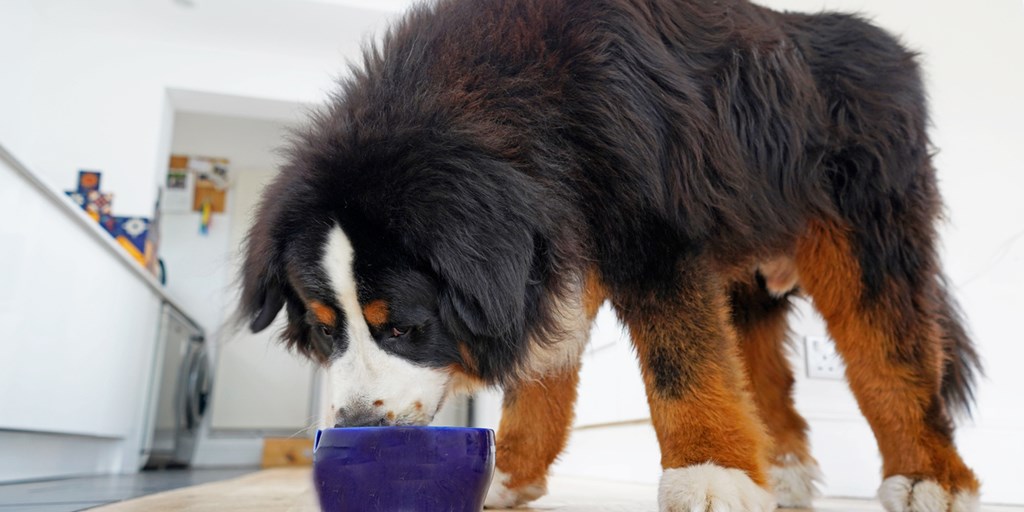As a pet parent, the amount of dog food options can be a bit overwhelming. Between different brands and dietary needs, it’s important to identify a nutritious, tasty dog food that will help your best friend live a happy, healthy life.
One question during this process may seem simple, but can be more complex than expected: What’s the difference between wet and dry dog food? Both wet and dry dog foods are viable options depending on several factors. Let’s break down the benefits of both types of dog food and why they might be right for your canine companion.
The Benefits of Dry Dog Food
Dry dog food is made with raw ingredients that are mixed together. There are a few different ways that dog food companies make dry dog food – many will extrude their kibble at high temperatures. Bil-Jac gently, slow cooks their ingredients to help protect the key nutrients dogs need for a complete and balanced diet.
Regardless of the method, these cooked ingredients are eventually dried into the bite-size pieces you’ll see on and in dog food bags. These little bits are both tasty and offer a few different perks for your favorite furry pal.
Easy and convenient
One great part about dried dog food is that it’s convenient to have on hand and won’t spoil for a long time when properly stored. Whether you keep it in the bag or a separate container, dry dog food is easy to buy and store. The ability to scoop out individual servings based on your dog’s weight also makes it easy to properly portion out food according to the bag’s directions.
A good option for grazers
Another advantage of dry dog food keeping for a while is that it’s okay if it sits in a food bowl for a while. Dogs can have different eating behaviors. For dogs that are prone to eating small amounts throughout the day, dry dog food is more amenable to sit out than a wet food that may not sit well over time. That’s a big plus if your precious pooch is prone to grazing.
The Benefits of Wet Dog Food
While dry dog food has its benefits, wet dog food also has a few distinct advantages. While wet food is also generally referred to as canned dog food, these tasty meals can come in all sorts of refrigerated or shelf-safe containers. No matter the packaging, wet food is going to retain enough moisture to offer some benefits that dry kibble doesn’t.
Extra hydration
As you may expect, wet dog food is going to have higher water content than the dry kibble. This added water will help hydrate your best friend, which is valuable during dry, hot climates, or if your dog tends to not drink enough water on occasion. As such, wet dog food can serve as an additional source of water to keep your buddy healthy.
A sense of fullness
If your dog is struggling with weight issues, wet dog food may be an option. Wet dog food can help your dog feel full earlier than a dry dog food because it has a higher moisture content than typical kibble. This benefit means that you can potentially use wet dog food to assist with weight management if your best friend is driven by the need to feed.
Potent smell
While a good dry dog food can smell great to the average dog, some canine companions need something a little stronger. A dog’s sense of smell can weaken over time, which may stop them from being quite as interested in their food. A freshly open container of wet food will typically have a more intense scent, making it an enticing treat for any precious pooches with weaker senses of smell.
Should I Feed My Dog Dry Food or Wet Food?
The short answer to this question is that it all depends on your best friend. Every dog is different, so you’ll want to consider a few different factors to determine if one dog food type is better for your furry friend than another.
- Size. The size of your dog can dictate not only how much he eats, but also how easy it is for him to eat certain types of food. Smaller mouths may need a smaller kibble or a wet dog food. Meanwhile, dry kibble may be more feasible for dogs who need larger meals to support their dietary needs.
- Age. As your dog gets older, he may need softer meals to make it easier to chew. Some dry foods. like Bil-Jac Senior, have an easy-to-chew kibble. In addition, dry dog food may be better if he needs to maintain a healthy weight in his later years.
- Preference. Simply put, your dog should love what he eats. Some dogs may show a preference for wet or dry dog food, while others may not care. You may also have a picky eater who needs something really delicious to entice him such as Bil-Jac Picky No More Dry Food or Pate Platters Wet Food.
Using dry dog food as the foundation for your dog’s diet is a great place to start. It’s convenient, easy to store, simple to measure, and has a very reasonable cost to feed per day. Feeding only wet food may water down your dog’s nutrition and is a more costly option for dinner. Mixing in some wet food, for special occasions or every day, can add some extra delight to mealtime for just a little extra expense. Just be sure to keep any unused portion of wet food in the refrigerator until its needed.
,

